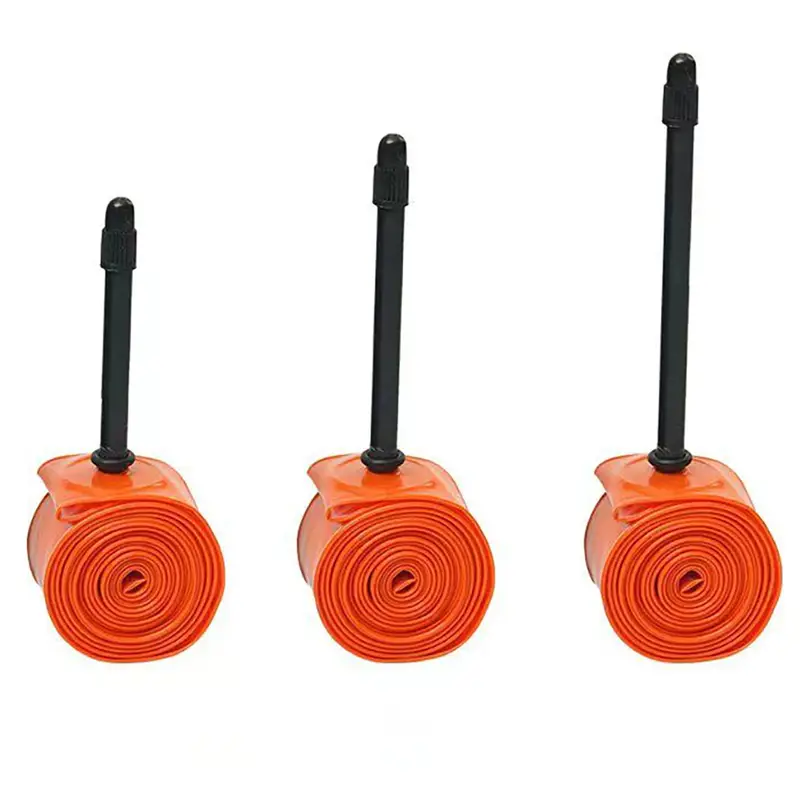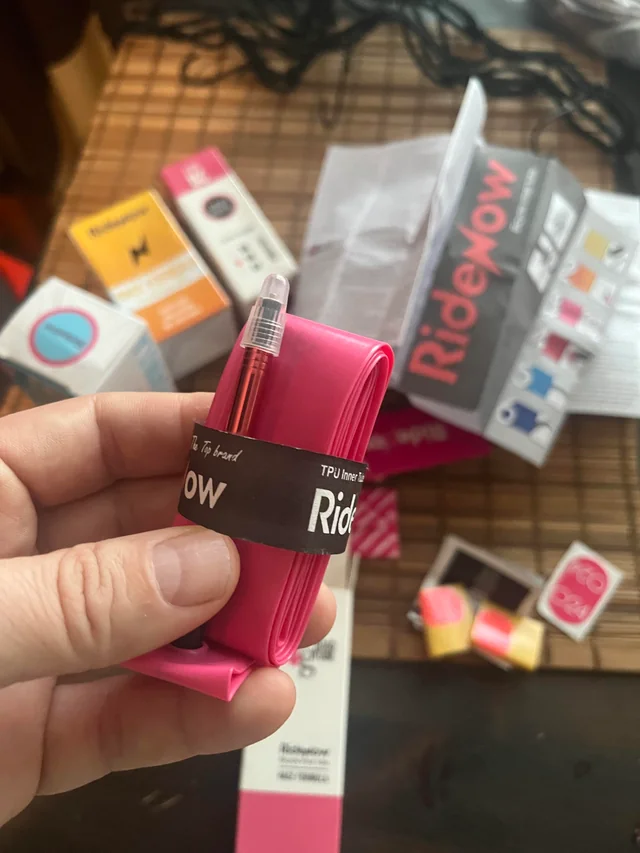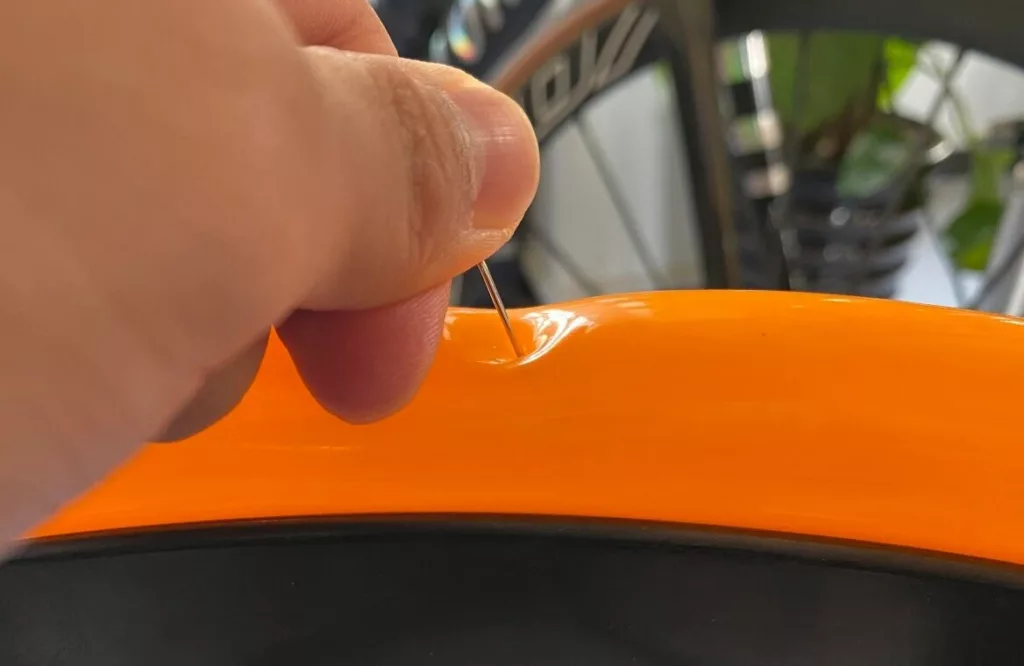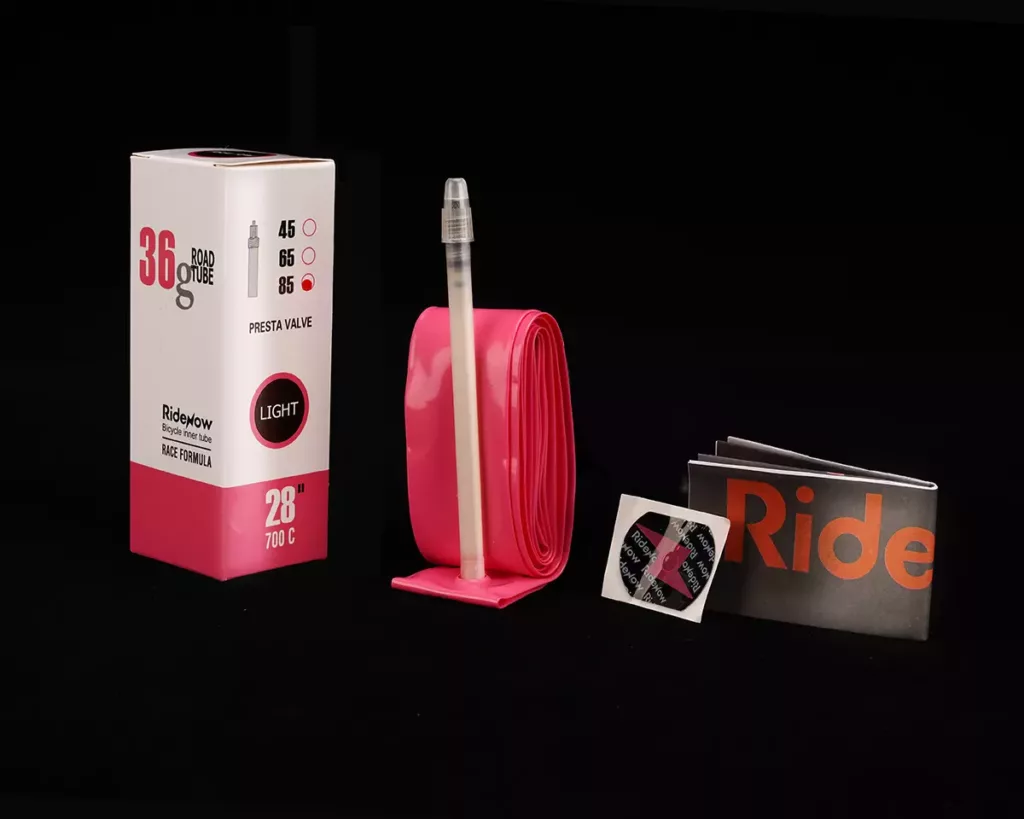In the ever-evolving world of cycling, technological advancements continually reshape the landscape, and one of the latest innovations capturing the attention of enthusiasts is the introduction of TPU (Thermoplastic Polyurethane) tubes. These inner tubes represent a significant shift from the traditional rubber inner tubes that have been a staple in bike wheels for decades.
Table of Contents
ToggleTPU tubes are celebrated for their lightweight nature, puncture resistance, and improved air retention capabilities, promising to enhance performance and reduce maintenance. We investigate how these features can translate into real-world advantages for both casual riders and competitive cyclists. From road racing to mountain biking, the implications of switching to TPU tubes are vast and varied.
Furthermore, we address the installation process, and their compatibility with different types of bikes and tyres, and weigh the cost-benefit analysis for making the switch. Whether you’re a seasoned pro or a weekend warrior, understanding the dynamics of TPU tubes is crucial in staying abreast with the latest cycling technology and making informed decisions about your gear.
1. What are TPU Tubes in Cycling?
TPU (Thermoplastic Polyurethane) tubes are a type of bicycle tire inner tube made from a specific type of plastic. These tubes are known for their durability, flexibility, and resistance to punctures. They are often used in high-performance cycling due to their lightweight nature and ability to withstand high pressures.
The material, TPU, is a type of polymer that combines the best properties of plastic and rubber. It’s flexible, durable, and resistant to many environmental factors, making it an ideal material for bicycle tubes. TPU tubes are often more expensive than traditional rubber tubes, but many cyclists find the benefits outweigh the cost.
One of the main advantages of TPU tubes is their resistance to punctures. The material is tough and can withstand sharp objects better than rubber. This means less time fixing flats and more time riding.
TPU tubes are also very lightweight. This can be a significant advantage in competitive cycling, where every gram counts. The weight difference between a TPU tube and a traditional rubber tube may seem small, but over long distances, it can make a noticeable difference.
Another advantage of TPU tubes is their ability to hold high pressures. This is particularly useful in road cycling, where high tire pressures can reduce rolling resistance and improve speed.
Despite their many advantages, TPU tubes are not without their drawbacks. They are more expensive than traditional tubes and can be more difficult to install. However, many cyclists feel these drawbacks are outweighed by the benefits.
2. How to Install TPU Tubes?
Installing TPU tubes can be a bit more challenging than installing traditional rubber tubes. However, with the right tools and some patience, it’s a task that most cyclists can handle.
First, you’ll need to remove the old tube from your tire. This usually involves deflating the tube, loosening the tire bead from the rim, and then pulling the tube out.
Next, you’ll need to check the inside of your tire for any sharp objects that could puncture your new tube. This is an important step that shouldn’t be skipped.
Once the tire is clean, you can start installing the TPU tube. Start by partially inflating the tube to give it some shape. This will make it easier to fit into the tire.
Next, place the tube inside the tire, making sure it’s evenly distributed around the rim. Then, start working the tire bead back onto the rim. This can be a bit tricky with TPU tubes, as they tend to be a bit stiffer than rubber tubes.
Once the tire is back on the rim, you can fully inflate the tube. Be sure to check the tire pressure regularly, as TPU tubes can lose pressure over time.

3. How to Maintain TPU Tubes?
Maintaining TPU tubes is similar to maintaining traditional rubber tubes. Regularly checking tire pressure is important, as TPU tubes can lose pressure over time. It’s also important to regularly inspect the tubes for any signs of damage or wear.
One of the main benefits of TPU tubes is their resistance to punctures. However, this doesn’t mean they’re immune to damage. Sharp objects can still puncture TPU tubes, so it’s important to regularly check your tyres for any sharp objects that could cause damage.
If you do find a puncture in your TPU tube, it’s usually possible to repair it. There are specific patch kits available for TPU tubes that can seal small punctures and allow you to continue riding.
In terms of cleaning, TPU tubes don’t require any special care. They can be cleaned with mild soap and water if needed, but it’s usually not necessary.
4. Are TPU Tubes Worth the Extra Cost?
Whether TPU tubes are worth the extra cost depends on your specific needs as a cyclist. If you’re a competitive cyclist looking for every possible advantage, the lightweight nature and high-pressure capabilities of TPU tubes may make them worth the cost.
On the other hand, if you’re a casual cyclist who doesn’t mind fixing the occasional flat, traditional rubber tubes may be a more cost-effective option.
It’s also worth considering the longevity of TPU tubes. While they are more expensive upfront, they tend to last longer than traditional tubes, which could make them more cost-effective in the long run.

5. Can TPU Tubes be Used for Mountain Biking?
TPU tubes can be used for mountain biking, but they may not be the best choice for all riders. The rough and unpredictable terrain of mountain biking can put a lot of stress on tubes, and while TPU tubes are resistant to punctures, they are not indestructible.
Additionally, TPU tubes are best suited for high-pressure situations, which is typically not the case in mountain biking. Mountain bike tyres generally run at lower pressures than road bike tyres, which means the high-pressure capabilities of TPU tubes may not be fully utilised.
That being said, some mountain bikers do prefer TPU tubes for their durability and lightweight nature. If you’re considering TPU tubes for mountain biking, it may be worth trying them out to see if they meet your needs.
6. How to Repair a Punctured TPU Tube?
Repairing a punctured TPU tube is similar to repairing a traditional rubber tube. You’ll need a patch kit designed for TPU tubes, which usually includes a patch, adhesive, and sandpaper.
First, you’ll need to locate the puncture. This can usually be done by inflating the tube and listening for a hissing sound. Once you’ve found the puncture, mark it with a pen or marker.
Next, use the sandpaper included in the patch kit to roughen the area around the puncture. This will help the adhesive bond to the tube.
Apply the adhesive to the roughened area, then place the patch over the adhesive. Press down firmly on the patch to ensure it adheres properly.
Once the adhesive has dried, you can re-inflate the tube and check for any leaks. If the patch holds, your tube is ready to go.

7. What is the Lifespan of TPU Tubes?
The lifespan of TPU tubes can vary depending on a number of factors, including how often you ride, the conditions in which you ride, and how well you maintain your tubes.
In general, TPU tubes are known for their durability and can often last longer than traditional rubber tubes. However, they are not immune to damage and can still be punctured by sharp objects.
Regular maintenance, including checking tire pressure and inspecting for damage, can help extend the lifespan of your TPU tubes. If you do notice any signs of wear or damage, it’s best to replace the tube to prevent any potential issues while riding.
8. Are TPU Tubes Suitable for All Types of Bicycles?
TPU tubes are suitable for most types of bicycles, including road bikes, mountain bikes, and hybrid bikes. However, they may not be the best choice for all riders.
TPU tubes are best suited for high-pressure situations, which makes them ideal for road cycling. They are also lightweight, which can be an advantage in competitive cycling.
For mountain biking, the benefits of TPU tubes may not be as noticeable. Mountain bike tyres generally run at lower pressures, and the rough terrain can put a lot of stress on tubes.
For casual riders, the extra cost of TPU tubes may not be worth it. Traditional rubber tubes are cheaper and can be easier to install and maintain.

9. How to Choose the Right TPU Tube for Your Bike?
Choosing the right TPU tube for your bike depends on a few factors, including the size of your tyres, the type of riding you do, and your personal preferences.
First, you’ll need to know the size of your tyres. This is usually printed on the side of the tire and will be in a format like “700x23c” or “26×2.1”. The first number is the diameter of the tire, and the second number is the width. You’ll need to choose a tube that matches these measurements.
Next, consider the type of riding you do. If you’re a road cyclist who often rides at high pressures, a TPU tube designed for high pressure may be the best choice. If you’re a mountain biker, a tube designed for lower pressures and rough terrain may be more suitable.
Finally, consider your personal preferences. Some riders prefer the feel of TPU tubes, while others prefer traditional rubber tubes. It may be worth trying out a few different types to see what you like best.
10. What are the Alternatives to TPU Tubes?
There are several alternatives to TPU tubes, including traditional rubber tubes, latex tubes, and tubeless systems.
Traditional rubber tubes are the most common type of bicycle tube. They are cheaper than TPU tubes and are easy to install and maintain. However, they are not as resistant to punctures and are heavier.
Latex tubes are another option. They are lighter than both TPU and rubber tubes and are known for their smooth ride quality. However, they are not as durable as TPU tubes and can be more difficult to install.
Tubeless systems are becoming increasingly popular, especially among mountain bikers. These systems eliminate the need for an inner tube, which can reduce the risk of flats. However, they can be difficult to set up and require regular maintenance.
In the end, the best choice depends on your specific needs and preferences. It may be worth trying out a few different options to see what works best for you.






